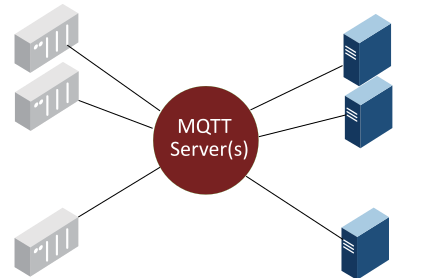Hello Seekers! In this blog, we will look into some of the finest security measures for the MQTT protocol. Hope you find this insightful.
What is MQTT ?

The MQTT protocol is a machine-to-machine (M2M) networking protocol. MQTT is a light-weight publish/subscribe messaging system. It has gained a lot of traction in many domains, notably in the IoT, since it is a light-weight, data-centric system that requires a minimal code footprint and offers several advantages over the standard HTTP protocol. There are numerous MQTT Broker and client implementations to pick from.
However, before adopting any MQTT broker implementation, it is necessary to understand the security capabilities of both the MQTT broker and the clients and secure the protocol for data transfer. In this blog, we will look into some of the best practices to secure the MQTT protocol.
Client Authentication
For every MQTT broker to authenticate the identity of MQTT clients, there are three types of client authentication procedures available.
- Client Identifier (Client Id)
- Username and Password
- Client Certificates
Client Identifier
Every MQTT client must have a unique Client Id. Client will send client id along with with the CONNECT packet. Broker uses the Client Id to generate and maintain the session state.
MQTT identifies the connection using the client id but client id has nothing to do with the connection’s authentication. However, some broker implementations use client ids to provide some baseline security. But again, tampering with the client id is quite easy on the client side. So, using client id alone for authentication is not a good idea.
Username and Password
Before allowing a connection, a MQTT broker may require a valid username and password from the client. The MQTT client will send the credentials to the MQTT broker with the CONNECT packet, and the broker verifies these details before allowing the MQTT session.
Unless encrypted at the transport layer, the username and password are provided to the broker in clear text. For a more secure connection, TLS communication is recommended as it encrypts the data being transferred over it.
Client Certificates
Certificate-based client authentication is the most secure type of client authentication. The client delivers an SSL certificate signed by a trusted root CA to the server to authorize the client.
However, because users will need to deploy and administer certificates on a large number of clients, this is the most complicated method too. Preferably, only a small number of clients who require a high level of security should use this method of authentication.
Restricting access to topics and resources
Every MQTT broker must employ an access control mechanism in place to prohibit MQTT clients from accessing specific topics or resources based on information provided by the client, such as usernames or client ids. With such mechanisms, We will have control over which clients can subscribe and publish to topics.
Data Security
TLS Security
TCP ports 8883 and 1883 are often designated for MQTT TLS and non-TLS connections.
In non-TLS communication, MQTT brokers and clients exchange messages in plain-text format. This kind of connection is considered unsafe. MQTT messages are encrypted by the TLS security layer for transmission in TLS communication on port 8883.
Using secure communication between the MQTT broker and the client is always a smart option.
MQTT Payload security
The MQTT protocol is a messaging protocol and it does not encrypt the payload it transmits. Hence, we must encrypt the payload at the application level. It’s also worth noting that application-level encryption does not associate with TLS packet encryption.
Digital signatures are used to determine whether a message is legitimate, but they need a key infrastructure and are unlikely to be implemented on limited clients such as sensors. However, simple solutions, such as HMAC, are available in those cases.
There are a variety of approaches for securing MQTT communication, though they all vary in implementation, these methods deployed on the MQTT broker with proper broker and client settings, limit the attack surface in an IoT ecosystem and provide a better defense against known threats. Hope this blog post has given you a basic understanding of the security procedures used to safeguard MQTT connections. Stay safe.

